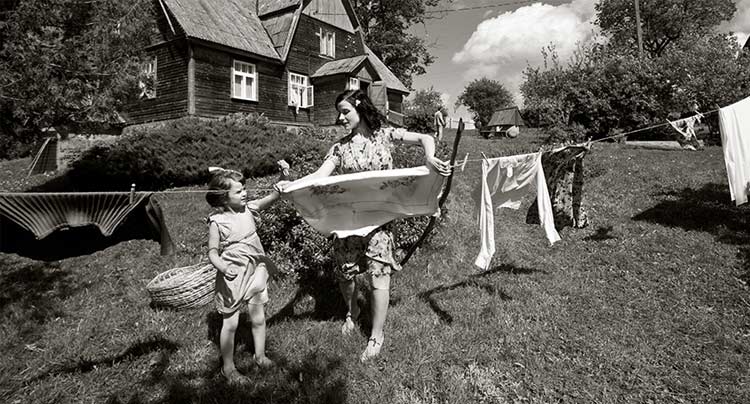TIFF 2014: In The Crosswind

In 1941, tens of thousands of people in Estonia, Lithuania, and Latvia were forced out of their homes on Joseph Stalin’s orders. Stalin deported these people to Siberia, an attempt to rid the Baltic nations of their own inhabitants. Erna Tamm (Laura Peterson) and her family were taken by Stalin’s army from their home in Estonia, with Erna’s husband Heldur (Tarmo Song) shipped off separately to a labour camp. Director Martti Helde uses Erna’s letters to her husband as the basis for In the Crosswind, a moving and visually stunning directorial debut.
Erna’s story may sound like the set-up for yet another gloomy war film, but Helde makes a bold and successful move in his portrayal. Once Erna and her family get taken out of their home, every scene plays out in a series of tableaux vivants; every actor stands still, frozen in time, while the camera elegantly moves around and through the scene. Erna narrates throughout, reading directly from her own letters to her husband. Rather than go for a gritty, relentless pace, the film goes for something ethereal. Helde and cinematographer Erik Põllumaa use this technique to focus on the way time takes on a different meaning for Erna and those around her. With their old lives abruptly interrupted, and no idea of what lies ahead, they’re stuck in a sort of permanent limbo state. Erna feels frozen in time, something Helde quite literally shows throughout.
And if the style sounds a little too on-the-nose, watching it in action is a whole other story. Taking months to construct each tableau, the cast and crew pull off something truly remarkable. The excellent sound design and score, combined with the way Helde disguises movement within each scene, heightens the emotional impact of Erna’s struggles to survive. The film’s final tableau is a total knockout of a sequence, one that constantly amazes in its sheer scope and originality, all while Erna’s narration and the soaring score hammer home the film’s themes of love and finding one’s way back home. In the Crosswind can be admired purely for its technical achievements, but it’s the way Helde evokes such strong, affecting emotions through style that make the film a truly terrific work.
